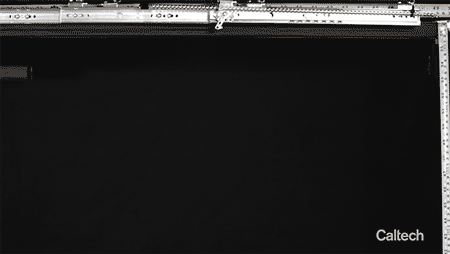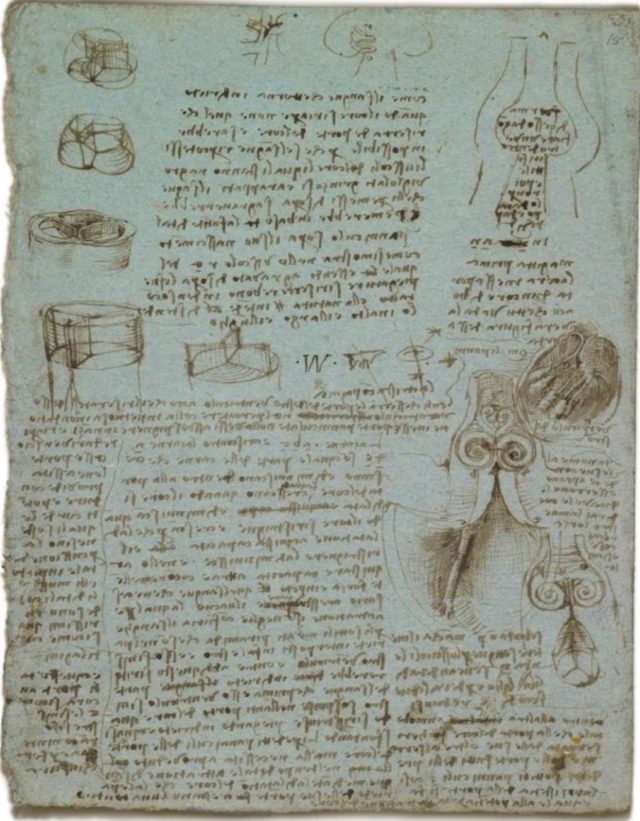
Caltech engineer Mory Gharib was poring over the digitized notebooks of Leonardo da Vinci one day, looking for sketches of flow visualization to share with his graduate students for inspiration. That's when he noticed several small sketches of triangles, whose geometry seemed to be determined by grains of sand poured out from a jar. Further investigation revealed that Leonardo was attempting to study the nature of gravity, and the little triangles were his attempt to draw a link between gravity and acceleration—well before Isaac Newton came up with his laws of motion, and centuries before Albert Einstein would demonstrate the equivalence principle with his general theory of relativity. [Edited for clarity.] Gharib was even able to re-create a modern version of the experiment.
Gharib and his collaborators described their discovery in a new paper published in the journal Leonardo, noting that, by modern calculations, Leonardo's model produced a value for the gravitational constant (G) to around 97 percent accuracy. What makes this finding even more astonishing is that Leonardo did all this without a means of accurate timekeeping and without the benefit of calculus, which Newton invented in order to develop his laws of motion and universal gravitation in the 1660s.
"We don't know if [Leonardo] did further experiments or probed this question more deeply," Gharib said. "But the fact that he was grappling with the problems in this way—in the early 1500s—demonstrates just how far ahead his thinking was."
Leonardo was born in 1452, the illegitimate son of a Florentine notary named Ser Piero d’Antonio and a local peasant girl named Caterina. Caterina was foisted off on a cowherd in a neighboring village, while Ser Piero married into a wealthy family. But he didn’t abandon his son. Leonardo grew up in his father’s household and received a solid education, and when his artistic talents emerged, he was apprenticed to Andrea del Verrochio, a prominent Florentine artist. In Andrea’s workshop, Leonardo learned the basics of painting and sculpting, grinding and mixing pigments, and perspective geometry. By the time he was accepted into the painters’ guild in 1472, he was already making sketches of pumps, weapons, and other ingenious devices of his own design, in addition to his art.

Leonardo produced more than 13,000 pages in his notebooks (later gathered into codices), less than a third of which have survived. The notebooks contain all manner of inventions that foreshadow future technologies: flying machines, bicycles, cranes, missiles, machine guns, an “unsinkable” double-hulled ship, dredges for clearing harbors and canals, and floating footwear akin to snowshoes to enable a man to walk on water.
Leonardo foresaw the possibility of constructing a telescope in his Codex Atlanticus (1490) when he wrote of “making glasses to see the moon enlarged”—a century before the instrument’s invention. And in 2003, Alessandro Vezzosi, director of Italy’s Museo Ideale, came across some recipes for mysterious mixtures while flipping through Leonardo’s notes. Vezzosi experimented with the recipes, resulting in a mixture that would harden into a material eerily akin to Bakelite, a synthetic plastic widely used in the early 1900s. So Leonardo may well have invented the first manmade plastic.
The notebooks also contain Leonardo's detailed notes on his extensive anatomical studies. The artist occasionally received permission to dissect human corpses from local hospitals, studying some 30 cadavers in his lifetime, and the sketches of what he observed are mostly remarkably accurate. Most notably, his drawings and descriptions of the human heart captured how heart valves can ebb blood flow 150 years before William Harvey worked out the basics of the human circulatory system.
reader comments
77